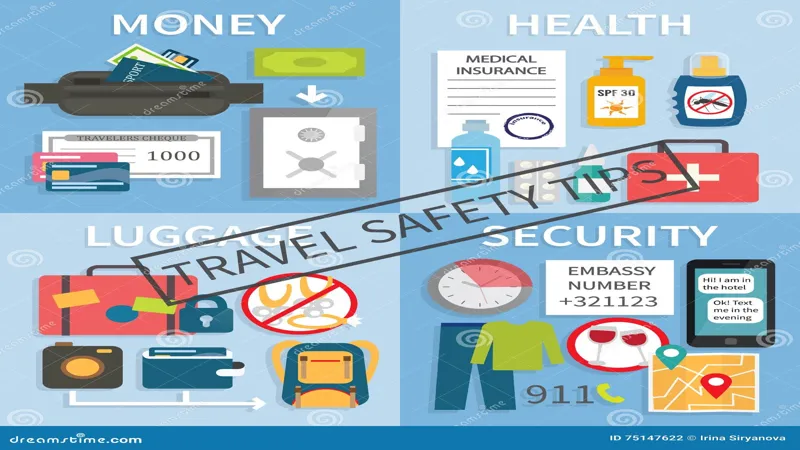In the aftermath of a tragic mid-air collision, the aviation community is grappling with questions of safety and accountability. Shawn Pruchnicki, an esteemed aviation expert and assistant professor at The Ohio State University, has become a pivotal voice in this discourse. With a multifaceted background as a commercial pilot, pharmacist, firefighter, and accident investigator, he emphasizes the importance of objectivity in understanding aviation incidents. As he navigates media inquiries following the collision between American Airlines flight 5342 and a U.S. Army helicopter, Pruchnicki remains steadfast in his belief that air travel is fundamentally safe, urging the public to resist the temptation to speculate about the causes of such tragedies.
| Category | Details |
|---|---|
| Expert Name | Shawn Pruchnicki |
| Occupation | Assistant Professor at the Center for Aviation Studies, Ohio State University |
| Background | Commercial airline pilot, pharmacist, firefighter, accident investigator |
| Key Message | Don’t speculate about the causes of aviation accidents |
| Role of Investigation | Objective detective work to gather facts and data from incidents |
| Data Sources | Flight Data Recorder (FDR) and Cockpit Voice Recorder (CVR) |
| FDR Purpose | Records various flight parameters like engine status and altitude |
| CVR Purpose | Records conversations and sounds in the cockpit |
| Importance of CVR | Can provide crucial insights if relevant conversations occurred |
| Blind Spots | Aircraft have blind spots that can lead to missed visibility of other planes |
| Lighting Effects | Night lighting can obscure visibility of aircraft from certain angles |
| Air Traffic Control Issues | Shortage of controllers can lead to dangerous situations |
| Safety Belief | Pruchnicki believes air travel remains safe despite recent incidents |
| Call for Investigation | Investigators will seek the truth for closure of victims’ families |
Understanding Aviation Safety
Aviation safety is a crucial topic for everyone who travels by air. Experts like Shawn Pruchnicki emphasize that despite accidents, air travel is statistically very safe. With advanced technology and strict regulations, the aviation industry works diligently to keep passengers and crew secure. It’s essential to understand that accidents can happen, but they are rare, and every incident leads to improvements in safety protocols.
Shawn Pruchnicki, an aviation expert, believes in the importance of data collection and investigation after any accident. By examining flight data recorders and cockpit voice recorders, experts can learn what went wrong and how to prevent similar incidents in the future. This thorough investigation process helps everyone feel more secure about flying, knowing that experts are working hard to keep air travel safe.
The Role of Investigators in Aviation
Investigation in aviation is similar to detective work; it requires patience and attention to detail. Shawn Pruchnicki explains that investigators analyze all the data available from accidents to piece together what happened. This includes looking at flight data and listening to cockpit recordings, which can reveal important information about the events leading up to an incident. Understanding these details is vital for improving safety standards in aviation.
Investigators face challenges, especially when accidents happen quickly. Sometimes, recordings may not provide all the answers due to the speed of events. Pruchnicki emphasizes the need for unbiased analysis and thorough investigation to uncover the truth. By maintaining objectivity, investigators can ensure that their findings are reliable and help prevent future accidents.
The Importance of Objectivity in Accidents
In the field of accident investigation, objectivity is key. As Shawn Pruchnicki states, it’s easy to jump to conclusions based on initial impressions. However, investigators must resist this temptation and focus on gathering evidence before forming theories. This careful approach ensures that all possible causes are explored, leading to more accurate conclusions and improved aviation safety.
Pruchnicki encourages everyone to avoid speculation during such incidents. By focusing on facts rather than theories, investigators can provide clear insights into what happened. This objective stance not only helps uncover the truth but also reassures the public that safety remains the priority in aviation.
Challenges Facing Air Traffic Control
Air traffic control is vital in keeping flights safe and organized. However, challenges like staffing shortages can complicate this role. On the day of the recent collision, only one air traffic controller managed multiple frequencies, which usually requires more personnel. This increased workload can lead to mistakes or oversights, emphasizing the need for sufficient staff to maintain safety in busy airspaces.
Shawn Pruchnicki expresses sympathy for air traffic controllers who face immense pressure in complex situations. Their decisions are crucial for the safety of countless lives. Therefore, it is essential to address staffing issues and provide adequate support for these professionals to ensure they can perform their duties effectively and safely.
Understanding Blind Spots in Aviation
Just like cars, airplanes have blind spots that can lead to dangerous situations. Shawn Pruchnicki explains that if an aircraft is hidden in a blind spot, pilots may not see it until it’s too late. This issue is especially concerning in busy airspaces where multiple aircraft are operating at the same time. Understanding these blind spots is crucial for both pilots and air traffic controllers.
Pruchnicki also notes the impact of lighting on visibility. At night, an airplane’s bright lights can be less visible from certain angles. This can create confusion and increase the risk of collisions. By educating pilots and crew about these visibility challenges, the aviation industry can work towards minimizing risks and enhancing overall safety.
The Future of Air Travel Safety
The future of air travel safety is promising, thanks to ongoing advancements in technology and safety protocols. Shawn Pruchnicki believes that despite recent incidents, the systems in place provide a significant safety margin. Innovations in aviation, such as better communication systems and advanced navigation technology, are continually improving how flights are monitored and managed.
However, Pruchnicki also acknowledges that safety margins have become tighter in recent years. This situation serves as a wake-up call for the industry, highlighting the need for constant vigilance and improvement. By learning from accidents and enhancing safety measures, the aviation industry can continue to ensure that flying remains one of the safest modes of transportation.
Frequently Asked Questions
Is air travel safe after recent incidents?
Yes, air travel remains safe. Aviation expert Shawn Pruchnicki emphasizes that the Federal Aviation Administration’s systems still provide a significant safety margin despite recent events.
What should we avoid after an aviation accident?
Avoid speculating about causes. Experts like Pruchnicki stress the importance of remaining objective and not jumping to conclusions about what happened.
What do black boxes record during flights?
Black boxes, including the flight data recorder (FDR) and cockpit voice recorder (CVR), capture critical flight information and cockpit conversations to aid in accident investigations.
Why are mid-air collisions a concern?
Mid-air collisions are a growing concern due to a shortage of air traffic controllers, which can lead to increased risks in airspace management.
How can visibility issues contribute to accidents?
Visibility challenges, like lighting and blind spots, can make it hard for pilots to see other aircraft, increasing the risk of collisions.
What happens after an aviation accident?
Investigators carefully analyze data from black boxes and aircraft to understand the incident, which helps improve safety and provide closure for victims’ families.
Why does Pruchnicki engage with the media?
Pruchnicki speaks with the media to prevent speculation and share accurate information, helping the public understand aviation safety and accident investigations.
Summary
Aviation expert Shawn Pruchnicki believes air travel remains safe despite a recent mid-air collision between an American Airlines flight and a U.S. Army helicopter. As an assistant professor and former airline pilot, he emphasizes the importance of not speculating about accidents. Investigators will analyze data from the flight and cockpit recorders to understand what happened. Pruchnicki points out factors like blind spots and lighting that can contribute to such incidents. He acknowledges the growing concern over mid-air collisions but reassures the public that safety measures are still strong, making him comfortable to fly with his family.



